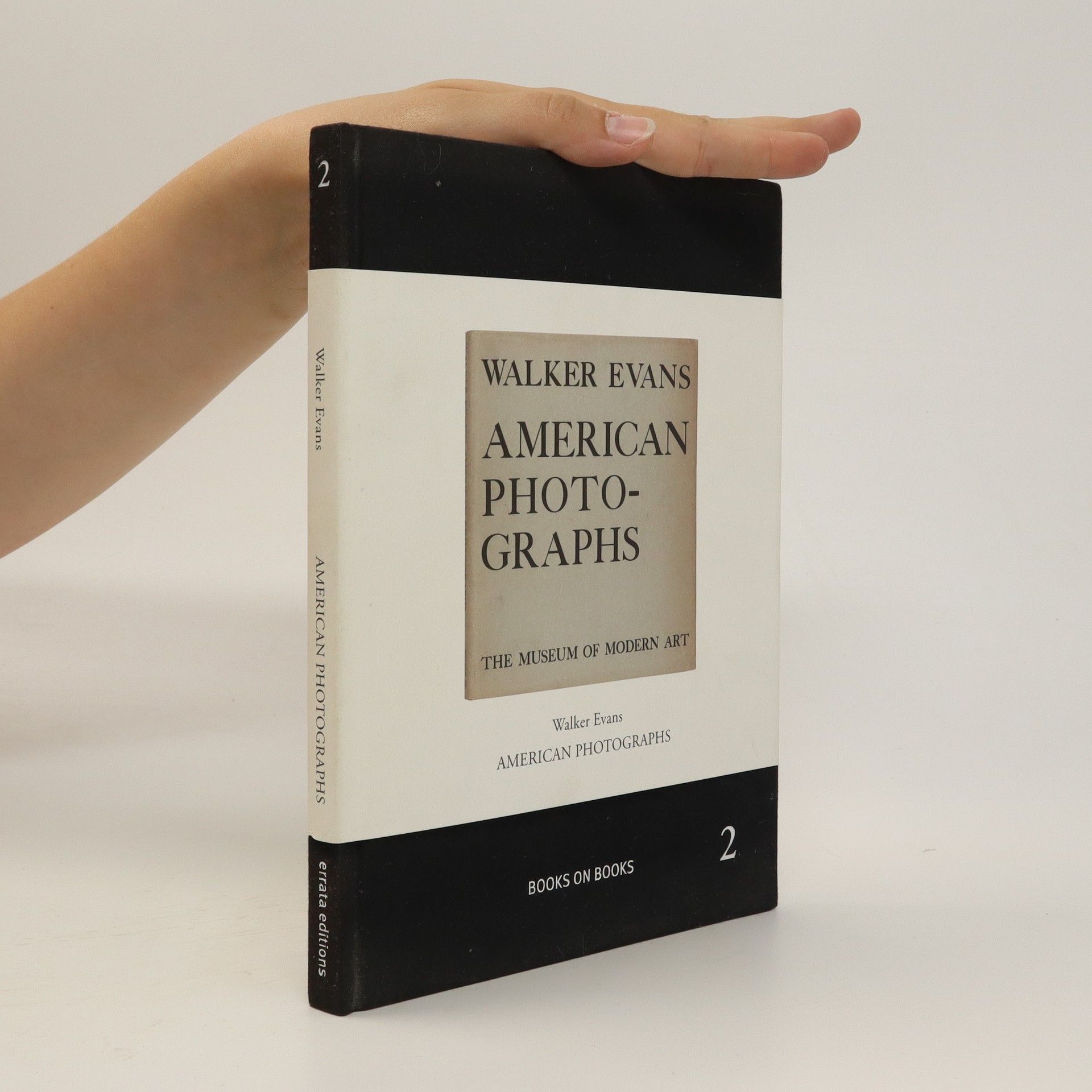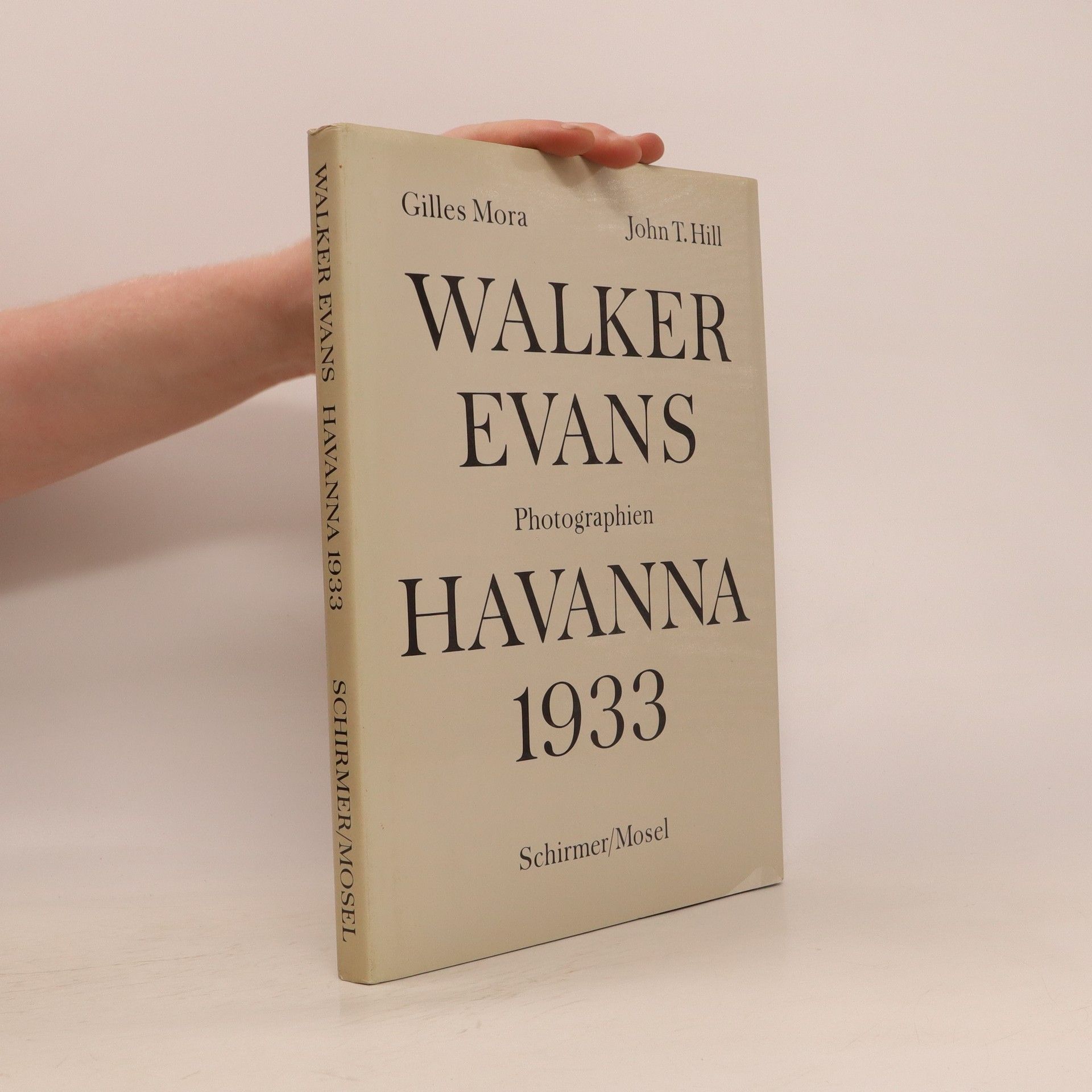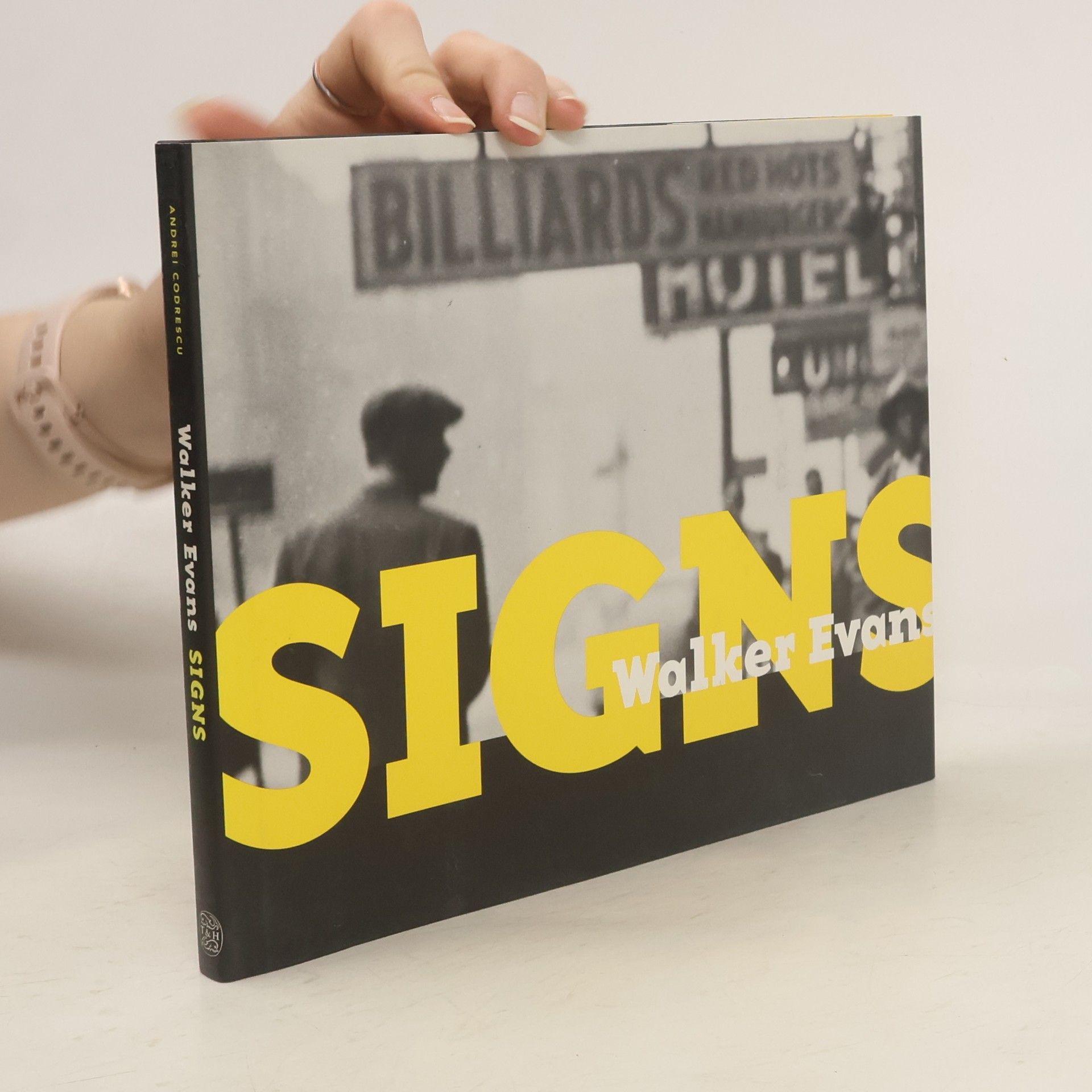Walker Evans Bücher
Dieser amerikanische Fotograf ist vor allem für seine Arbeit für die Farm Security Administration (FSA) bekannt, in der er die Auswirkungen der Großen Depression dokumentierte. Sein erklärtes Ziel war es, "gebildete, autoritative, transzendente" Bilder zu schaffen, oft aufgenommen mit einer Großformatkamera. Seine Werke, die als wegweisend für die visuelle Geschichte gelten, befinden sich in bedeutenden Museumssammlungen und waren Gegenstand zahlreicher retrospektiver Ausstellungen. Evans' Herangehensweise zeichnet sich durch rohe Ehrlichkeit und eine tiefgründige Beobachtung des Alltags aus.






Walker Evans
- 125 Seiten
- 5 Lesestunden
Unclassified
- 280 Seiten
- 10 Lesestunden
Edited by Jeff L. Rosenheim. Essays by Jeff L Rosenheim and Douglas Eklund. Introduction by Maria Morris Hambourg. This book, published on the occasion of the artist's first retrospective exhibition in three decades, presents a selection of mostly unpublished material from the Walker Evans Archive, the vast collection of negatives and papers acquired in 1994 from the artist's estate by The Metropolitan Museum of Art. Evans left to posterity an amazingly rich record of his creative process and inner life. From his earliest boyhood snapshots to the seldom-seen color Polaroids made in the year before his death, Unclassified - A Walker Evans Anthology traces the development of this American master through previously unpublished writings (fiction, diaries, essays, and criticism); his fascinating and copious early correspondence with the German artist, Hanns Skolle (Evan's best friend at the time); and revealing letters from Robert Frank, Lee Friedlander, and Diane Arbus. Previously-unknown photographs from the Metropolitan's collection of 40,000 negatives and transparencies reveal the artist at work. The anthology concludes with telling selections from Evan's seminal collection of vernacular roadside signs, picture postcards, printed ephemera, and a shockingly prescient album of newspaper clippings from the 20s and 30s that prefigures Andy Warhol and Pop and Conceptual Art by three decades.
Text by John Hill, Lincoln Kirstein, Jeffrey Ladd.
Walker Evans: Aperture Masters of Photography
- 96 Seiten
- 4 Lesestunden
Walker Evans' photography, a cornerstone of documentary art, is explored in this redesigned and expanded edition. Celebrated for his profound impact on 20th-century photography, Evans' work vividly captures the American experience from the late 1920s to the early 1970s. This volume features some of his most iconic images, complemented by a new introduction and commentary from photography historian David Campany, providing fresh insights into Evans' artistic vision and legacy.
Walker Evans (1903–75) is now considered perhaps the finest documentary photographer ever and his images have had considerable influence on other artists, and not only in the field of photography. He is well known for his 1930s work for the Farm Security Administration, documenting the effect of the Great Depression o
Preisen will ich die grossen Männer
- 534 Seiten
- 19 Lesestunden
Ein kolossaler Klassiker der amerikanischen Literatur: politisches Dokument und poetischer Traktat, das künstlerische Zeugnis einer Epoche. Im Sommer 1936 waren der 27jährige Dichterjournalist James Agee und der Fotograf Walker Evans in den amerikanischen Süden gereist - nach Oklahoma und nach Alabama - , um die Baumwoll-Pachtwirtschaft zu dokumentieren: aus dem Reportageauftrag einer Zeitschrift entstand ein erst 1941 veröffentlichtes Werk, das von der New York Library zu den einflussreichsten Buchdokumenten des zwanzigsten Jahrhunderts gezählt wird. Mehrere Wochen lebten James Agee und Walker Evans mit drei ausgewählten weißen Pächterfamilien zusammen und teilten deren erbarmungslos elendigen Alltag und eine kaum vorstellbare Armut, die Bedrohung durch Hunger und Vertreibung. Die schockierende Konfrontation mit diesen Lebensverhältnissen löste auch die Einsicht in die Unmöglichkeit einer herkömmlichen Berichterstattung aus
Signs
- 80 Seiten
- 3 Lesestunden
From the late 1920s to his death in 1975, photographer Walker Evans returned obsessively to particular subjects. This book brings together 50 photographs of signs in the rural South of the 1930s - billboards, posters, headlines - from the Getty Museum's collection of Walker's work.


